Tom's Guide Verdict
Netgear’s Orbi 4G LTE Advanced WiFi Router (LBR20) offers broadband freedom of choice by acting as a traditional mesh router that uses a wired broadband modem or by grabbing a data signal from an LTE mobile data network. It doesn’t work on all LTE networks and relies on older Wi-Fi 5 mesh technology but the LBR20 combo router can be a great alternative to wired internet if you are near a cell tower.
Pros
- +
Antenna ports
- +
Security software
- +
Powerful LTE receiver
- +
Backup or live LTE data source distributed on mesh Wi-Fi
Cons
- -
Uses older Wi-Fi 5 and LTE technology
- -
Not fully compatible with Verizon and T-Mobile’s Sprint network
- -
90-day support policy
Why you can trust Tom's Guide
Wi-Fi Spec: AC2200
Number of Antennas/Removable: 4/No; 2 LTE antenna ports
Ports: 1 WAN/1 LAN
Processor/Memory/Storage: Quad-core 717MHz/256MB/512MB
Wi-Fi chip: IPQ4019
Peak 802.11ax performance: 408.19Mbps (at 15 feet)
Range: 100 feet
Size: 9.0 x 6.0 x 2.3 inches
Estimated Annual Electricity Cost: $7.10
If you’re looking for a way to cut the broadband cord and use an LTE network as your primary internet connection, Netgear’s Orbi 4G LTE Advanced WiFi Router (LBR20) can help you do just that. The LBR20 can also provide an online connection and distribute it throughout your house by linking up with other Orbi gear in a mesh network. Like other Orbi mesh hardware, the LBR20 comes with Armor security software and has a single LAN port. However, the reach of its mobile data modem can be extended by plugging in an LTE antenna to its pair of ports. On the downside, it uses older Wi-Fi 5 technology and at the moment, lacks full compatibility with both Verizon and Sprint’s networks. The LBR20 also ignores newer and faster 5G mobile services. Still, it’s a good choice for those who rely on online data or RVers and off-the-grid types, because the LBR20 can always serve up data.
Our Netgear Orbi LBR20 review will help you decide if this device is one of the best Wi-Fi routers and whether or not you should choose it when setting up your own mesh network from scratch.
Netgear Orbi 4G LTE Advanced WiFi Router (LBR20) review: Pricing and availability
Rather than being available in a kit with multiple Orbi devices for larger homes, the LBR20 is only sold on its own as a host mesh router for $400. Based on the RBR20 model, it leverages the company’s triband Wi-Fi 5 mesh networking technology with 2.4GHz with 5GHz networks to move data to client devices as well as a second 5GHz network dedicated as a backchannel link from a satellite to the host to reduce data congestion and streamline flow. This also means the LBR20 can connect with any of Netgear’s other Wi-Fi 5 mesh satellites.
Netgear Orbi 4G LTE Advanced WiFi Router (LBR20) review: Design
The Netgear Orbi 4G LTE Advanced Router may look exactly like other oval-shaped Orbi products, but it has a secret inside. In addition to being able to distribute data from your cable modem, the LBR20 has the equivalent of a phone’s LTE receiver, antenna and modem inside. This lets it act as a primary router that grabs data out of thin air or operates as a backup for when your broadband provider fails you.
At 9.0 x 6.0 x 2.3 inches, the LBR20 is large for a mesh router but is smaller than Netgear’s RBK800 family of Wi-Fi 6 mesh devices. The LBR20 can easily be hidden on a bookshelf, windowsill or under a desk but there’s no way to directly hang it on a wall without Netgear’s optional $20 mounting bracket.
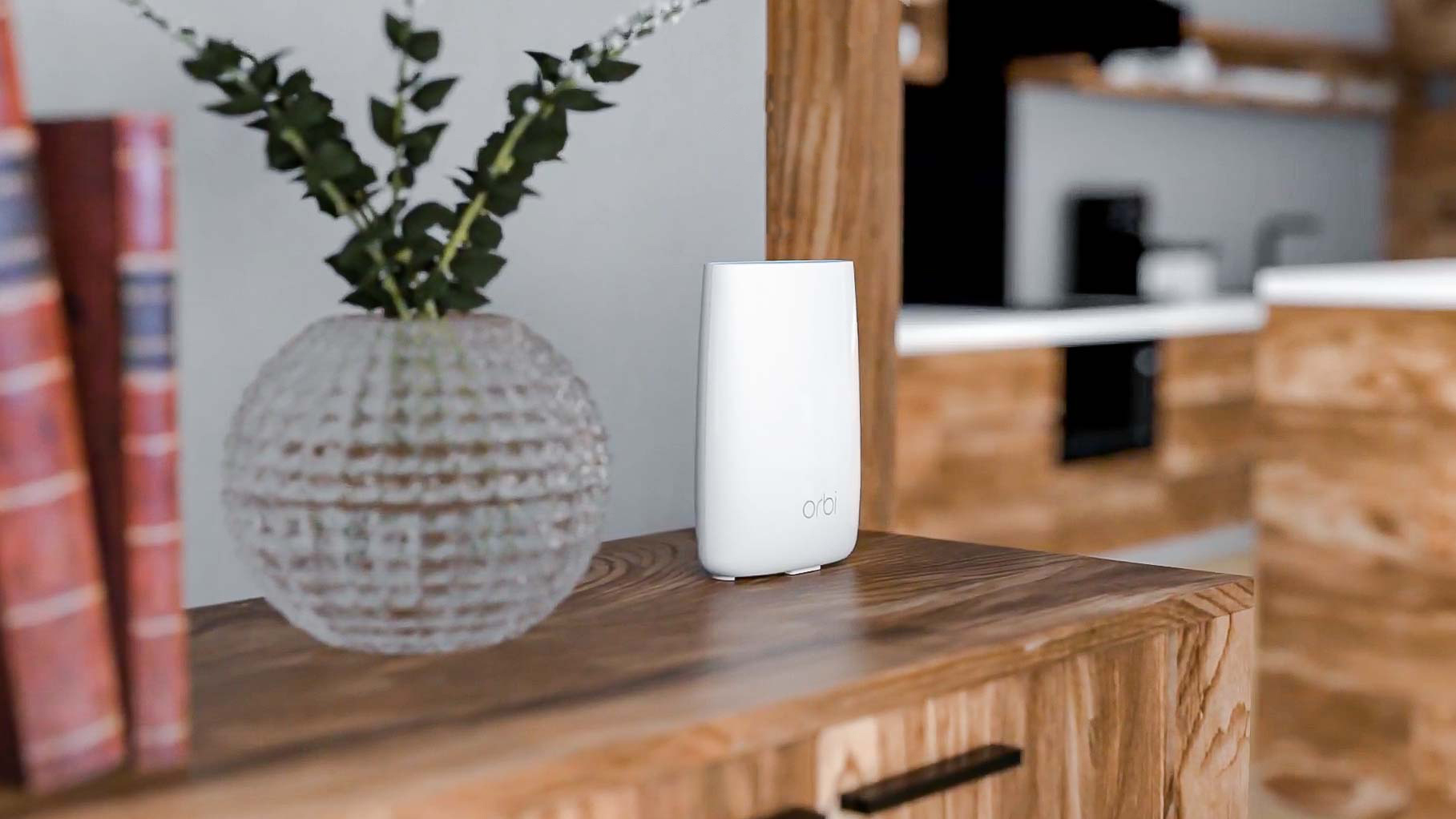
It does double duty with four Wi-Fi antennas as well as a large patch LTE antenna for the LBR20’s Category 18 data receiver. It tops out at 1.2Gbps, but to get that speed, you need to live within spitting distance of a cell tower. The router works with T-Mobile and AT&T’s networks out of the box and has not been registered on the Verizon network but that process is ongoing. However, it doesn’t work with the Sprint portions of the T-Mobile network, but these network segments are being upgraded.
The good news is that the LBR20 can do much better than the typical phone or tablet when pulling data from an LTE signal. While my Samsung Galaxy Note 20 was able to get an average of 9.5 Mbps from T-Mobile’s network, the LBR20’s throughput was more than four-times as good at over 40 Mbps. If that’s not enough, the system has a pair of SMA antenna connectors that can extend the LBR20’s reach. Netgear neither sells nor recommends antennas but with a 35dBi LTE antenna, the LBR20’s throughput increased by between 10-15 percent to over 45 Mbps.
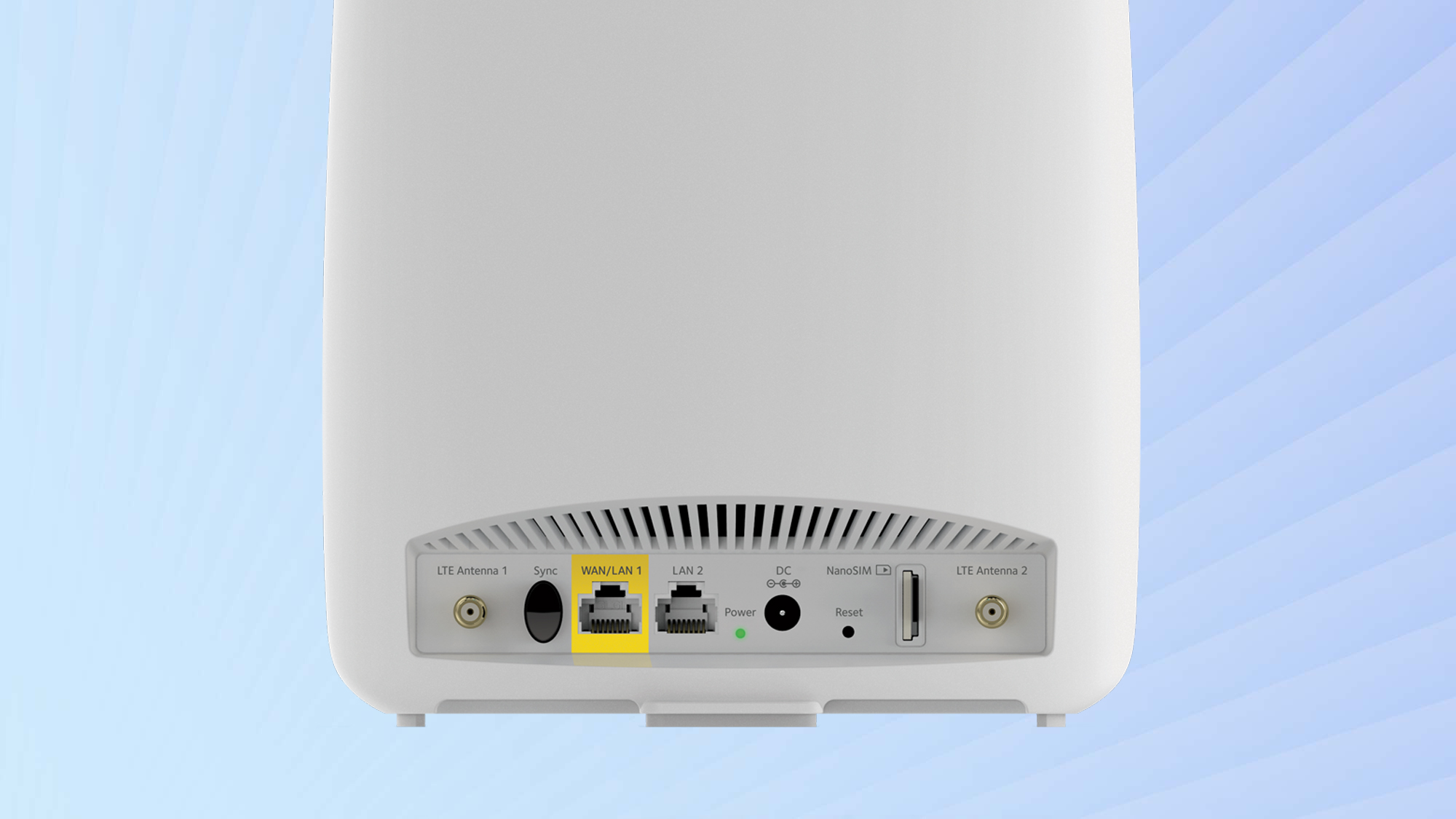
On the back of the LBR20 are Ethernet input and output ports along with a power button and a sync button for connecting with an Orbi network. It lacks a USB port but has a nano-SIM card slot and a reset key.

The LBR20 has a single LED band on top, so there’s no annoying blinking lights. When it glows magenta, the device is offline and requires attention. Rather than using a grille as a fashion detail, Netgear’s designers put openings for cool air above the ports and at the top. It never got hotter than 87 degrees Fahrenheit during testing.
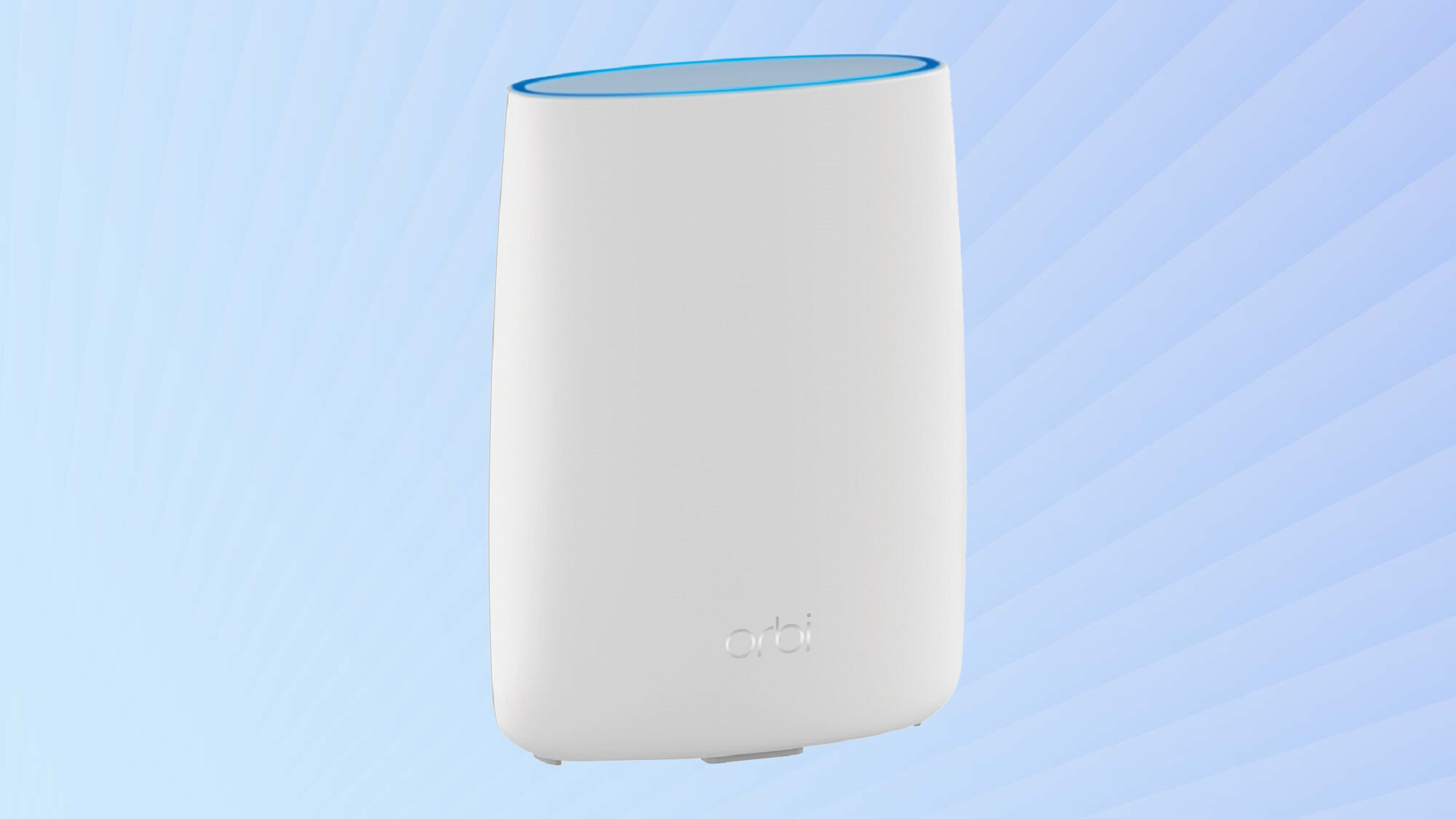
Built around Qualcomm’s ubiquitous IPQ4019 chipset, the LBR20 has a 717MHz quad-core processor with 256MB of RAM and 512MB of flash storage for holding the system’s firmware and settings. Based on Wi-Fi 5, it can take advantage of beamforming and MU-MIMO technology to fill a 2,000 square foot home with wireless data, according to Netgear. The LBR20’s tri-band design can move up to 400 Mbps over its 2.4GHz band as well as 866 Mbps over its primary 5GHz band. There’s also a secondary 5GHz band that also can move up to 866 Mbps over a dedicated backhaul link from the satellite to the host. The LBR20 also carries an AC2200 rating.
The LBR20 includes Netgear’s Armor security software to keep your network free of malware. It uses Bitdefender apps but only includes 30 days of security updates. To fully protect the router and network costs $70 a year, while Asus provides AIProtection Pro updates for free.
For me, the results speak for themselves. Over the course of a week of extensive use, the LBR20 never let me down. It proved indispensable when my cable network went down three times over a 24 hour period. The router automatically switched over to LTE mobile data mode and delivered over 40 Mbps – more than enough for me to continue working and then stream a baseball game and binge-watch TV.
Netgear Orbi 4G LTE Advanced WiFi Router (LBR20) Review: Performance
The Orbi LBR20 is a competent Wi-Fi 5 router that can get its data from either a traditional wired data network or from a wireless LTE mobile data network. Wherever you can use your phone, you can get data for your house, either as a primary source or as a back-up. However, it lags behind Wi-Fi 6 and 5G mobile phone products.
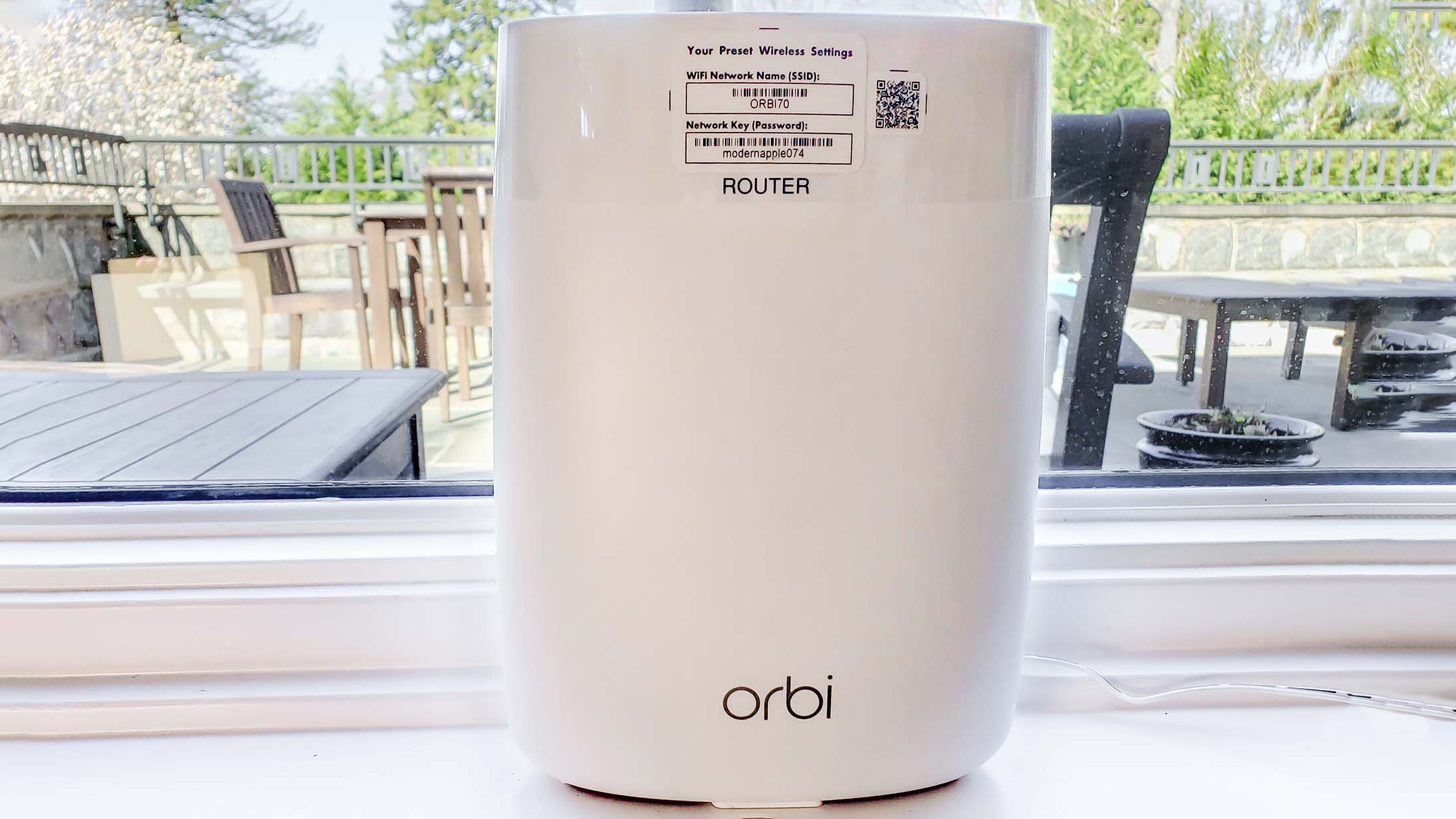
Using Ixia’s IxChariot networking benchmark software with the LBR20 connected to my cable modem, I created a busy Wi-Fi network in my 100-year old 3,500-square-foot home. The LBR20 was able to deliver a modest 408.2 Mbps to a system 15-feet away. That’s nearly 30 percent below the throughput of the Wi-Fi 5 based Linksys Velop mesh router’s 527.1 Mbps. It also came up short compared to newer Wi-Fi 6 routers, like the Orbi RBK852 (883.6 Mbps) and TP-Link Deco X20 (622.1 Mbps).
When I moved the test system 50-feet from the LBR20, its throughput dropped to 86.0 Mbps, or one-fifth the output of the Linksys Velop mesh router (459.4 Mbps). It also lagged behind the Deco X20’s 255.4 Mbps and the Orbi RBK852’s 124.4 Mbps.
At 75-feet, the LBR20’s throughput dropped to 18.8 Mbps, barely enough for a single 4K video stream. This put it well behind the Deco X20’s 112.7 Mbps and the RBK852’s 85.9 Mbps. When 90-feet separated the system and the router, the LBR20 could only muster 6.8 Mbps of bandwidth, just enough for an HD stream and some intermittent email. It had a range of 100-feet, while the Orbi RBK852 and Deco X20 lost contact at 90-feet.
When it came to sending a signal 25-feet and through a wall, the Orbi LBR20’s 207.1 Mbps was off the pace set by Wi-Fi 6 products, like the Orbi RBK852’s 782.9 Mbps and the Deco X20’s 556.2 Mbps. In our ceiling penetration test where the receiving system is a floor above the router, the RBK852 led again with 670 Mbps available compared to 320.5 Mbps for the Deco X20. The LBR20 was well behind at 255.8 Mbps.
The LBR20 left several parts of my house with Wi-Fi dead zones but adding an RBS40 satellite 50 feet away filled in the gaps, making for a full-house Wi-Fi network.
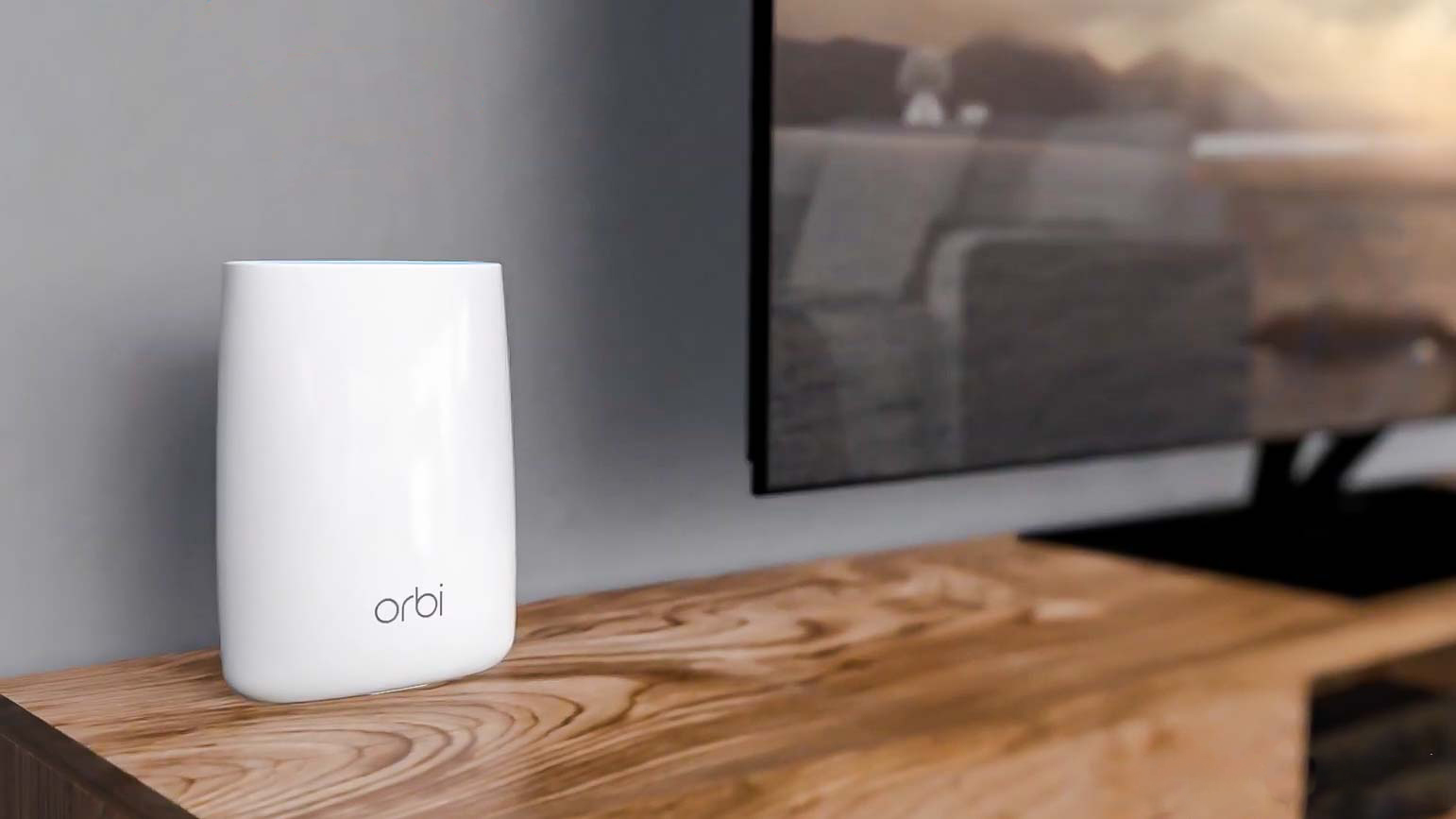
During testing, the LBR20 averaged 42.2 Mbps of LTE data using the T-Mobile data network. This can’t touch the 200 Mbps I’m used to, but the LBR20 was off the mark in terms of latency with ping values, as measured by Ookla’s speed testing app, which rose from 12 ms (for a wired connection) to 34 ms (when using an LTE connection). This shouldn’t be a problem for general use but might frustrate an online gamer.
The LBR20 passed the saturation test where I watched HD video on an iPad Pro as a Samsung Galaxy Tab S7+ played the BBC Internet feed and my HP EliteBook Dragonfly notebook played a Netflix movie. All this occurred as a ThinkPad T470 copied data onto and off of a network-attached RAID storage system. None of the audio or video was interrupted.
The LBR20 router was moderately efficient at using electricity with a power drain of 6.2-watts. That translates into a little over $7 a year in power bills if you pay the national average of 13 cents per kilowatt hour. Double it – to about $14 a year – if you add an Orbi satellite. That’s significantly less than other mesh kits, like the Arris SURFBoard Max Mesh’s $35.10.
Netgear Orbi 4G LTE Advanced WiFi Router (LBR20) review: Configuration
Just like with other Orbi products, there’s the choice between using the Orbi app and a connected browser to set up the router. The browser’s dashboard shows the basics while the Advanced sections provide a comprehensive array of options, including customizations like RTS threshold and the Preamble mode (which are unavailable on the app’s dashboard screen).
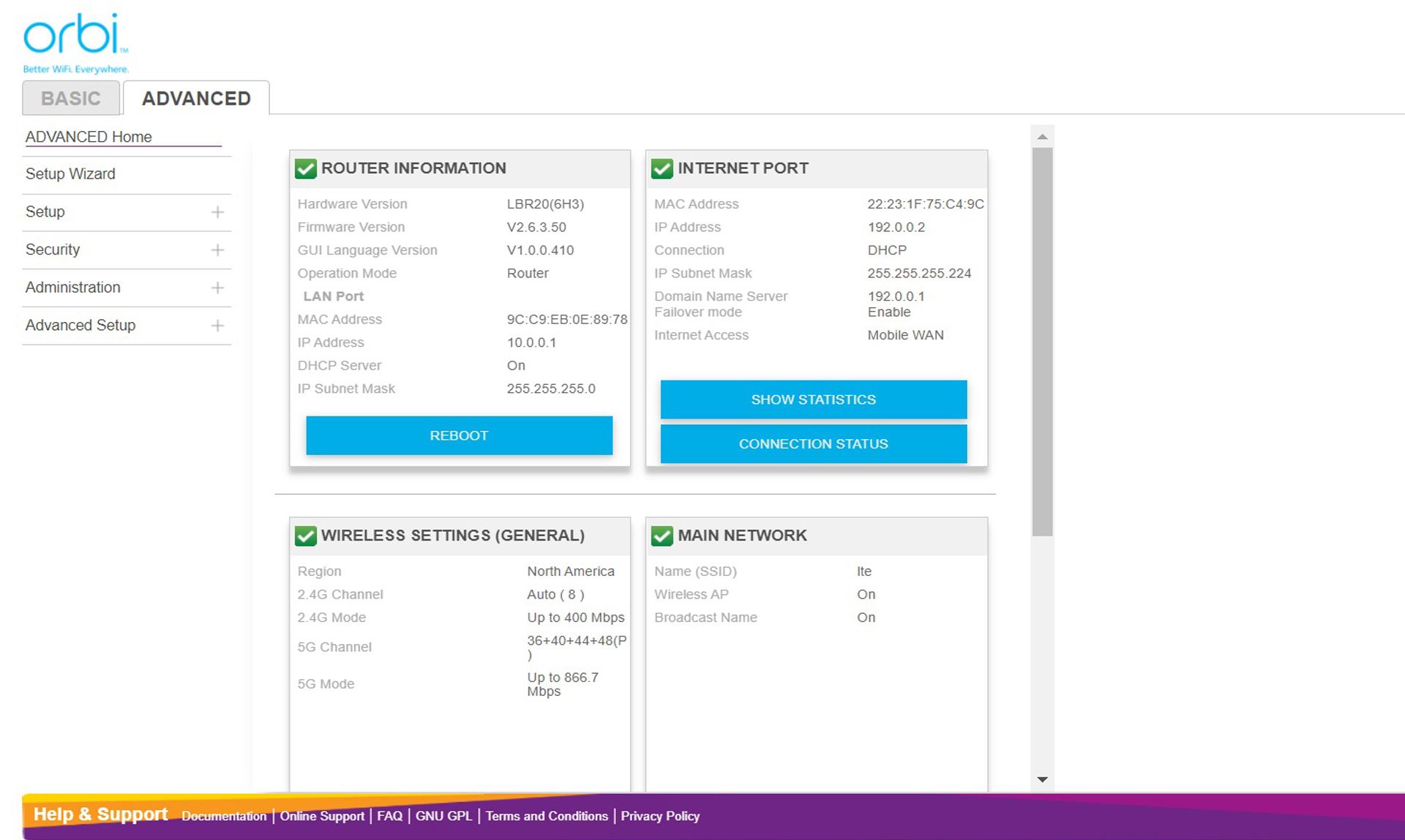
The app’s dashboard shows a comprehensive overview of the network, from the number of connected devices and current internet speed to whether the security software is working and if the parental controls are enabled. The LBR20 also adds the type of connection and the mobile carrier if it’s being fed with LTE data.
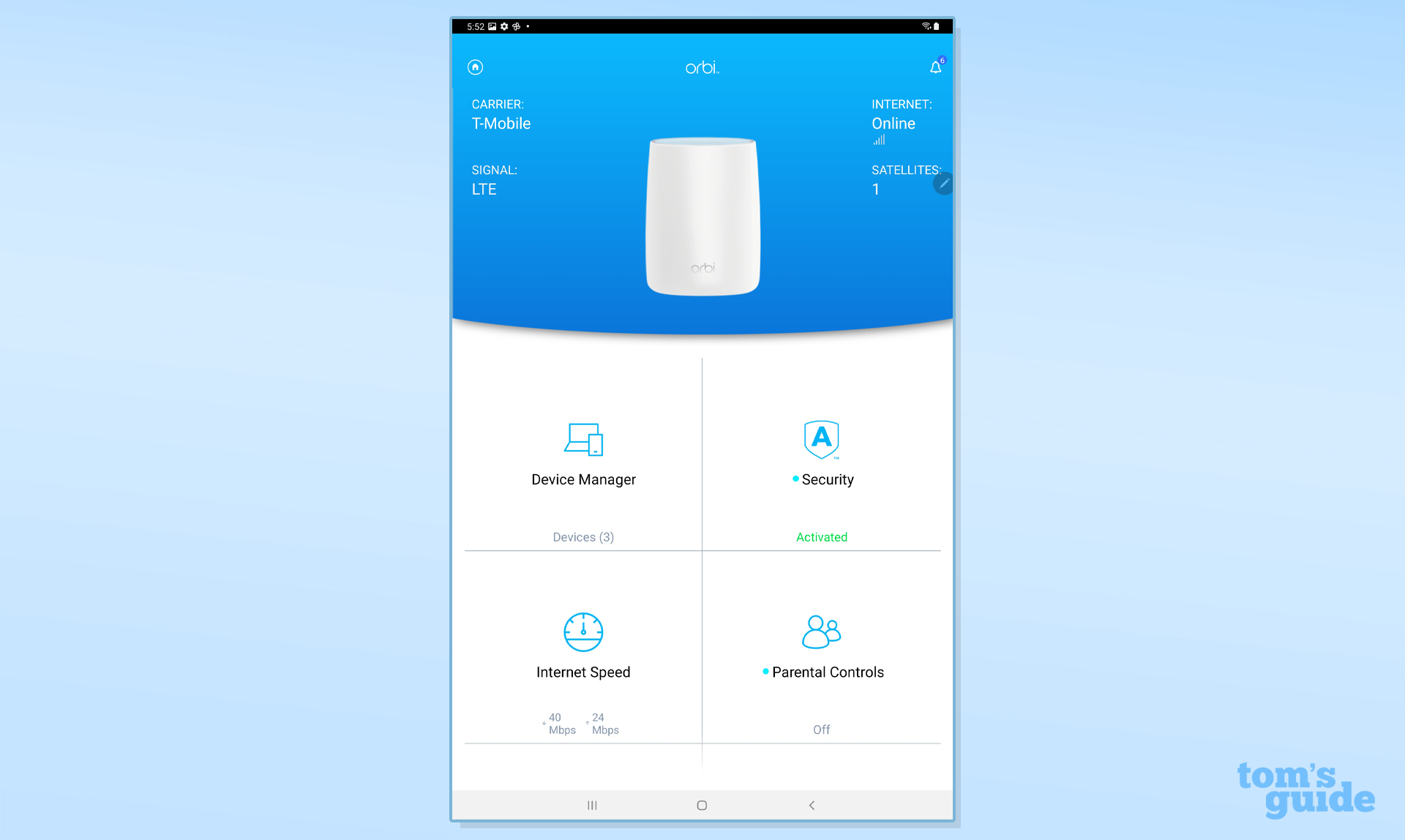
If you want more, tap the Home icon and you’ll get a list of configuration choices including Settings, Add a Satellite and the ability to see what devices are connected.
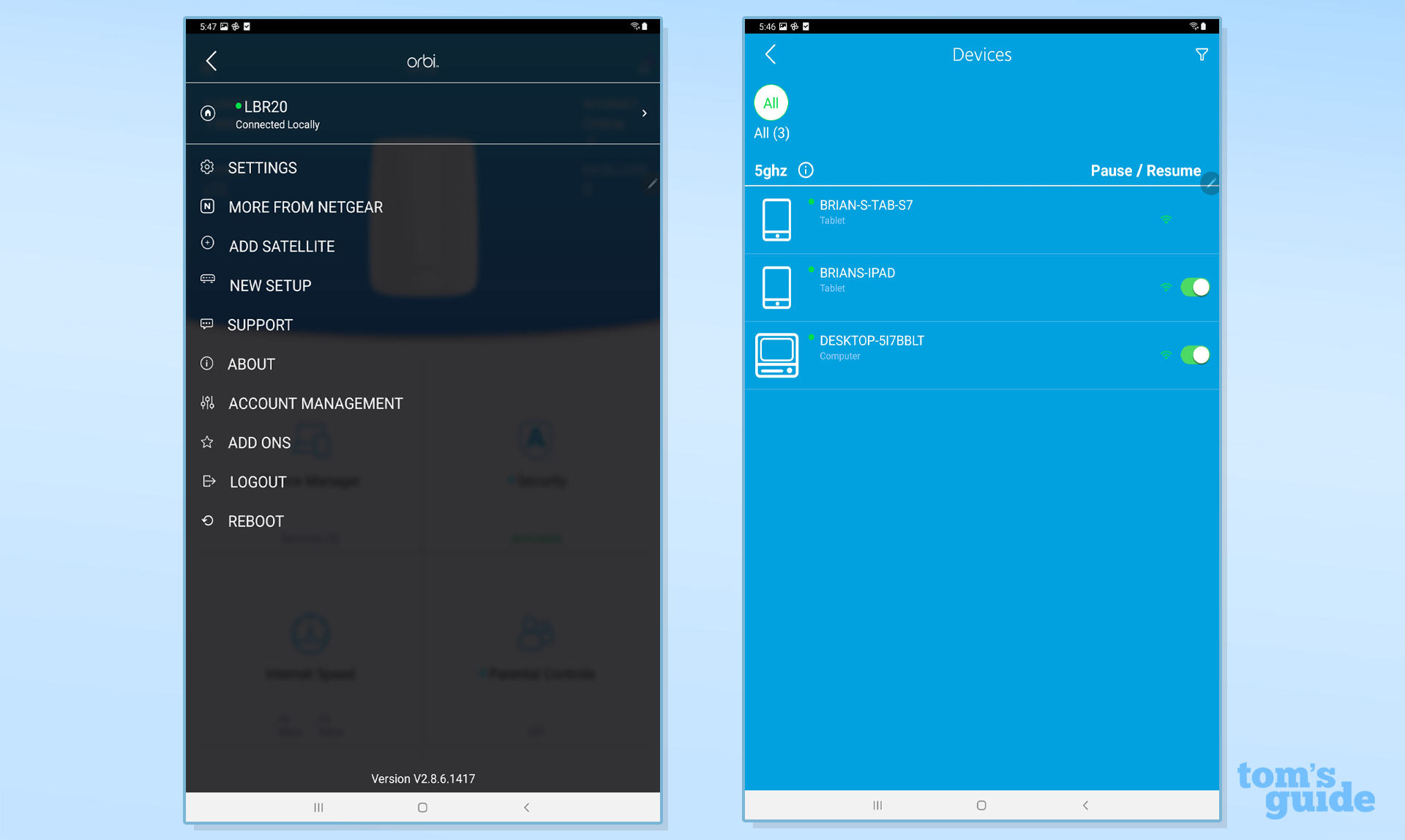
The LBR20 is flexible enough to act as either a primary internet source or as a fail-over backup internet source. In the Mobile Network Settings section, tap on Internet Type to choose from LTE-Only, Ethernet + LTE Fallback or Ethernet only. The LTE mixed mode took advantage of the LBR20’s ability to quickly change from a wired connection to a wireless one during an outage.
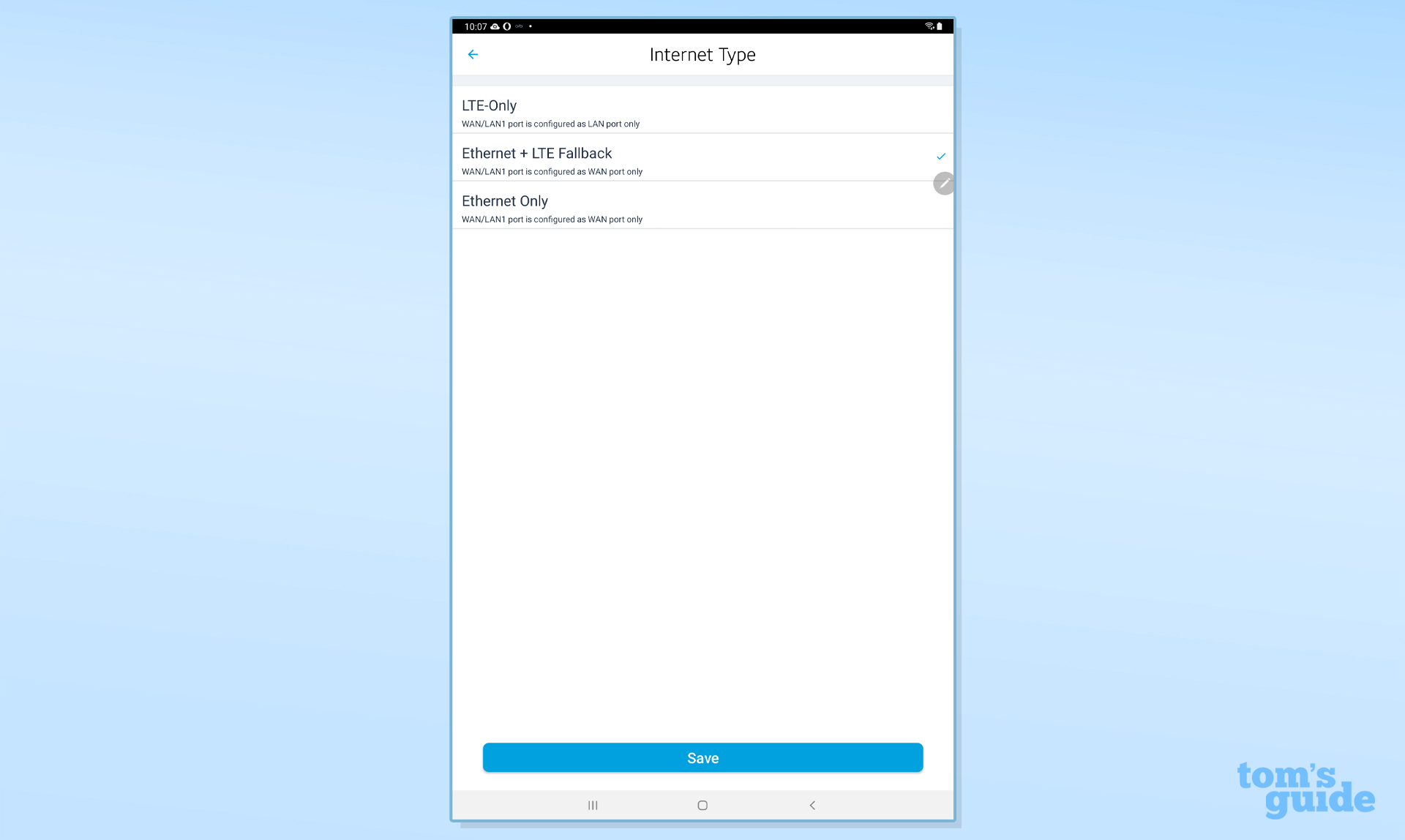
If you want, you can start over with a New Setup, reboot the router or check the satellite’s signal strength – something few routers offer. The Wi-Fi settings can be adjusted or the network name and password changed.
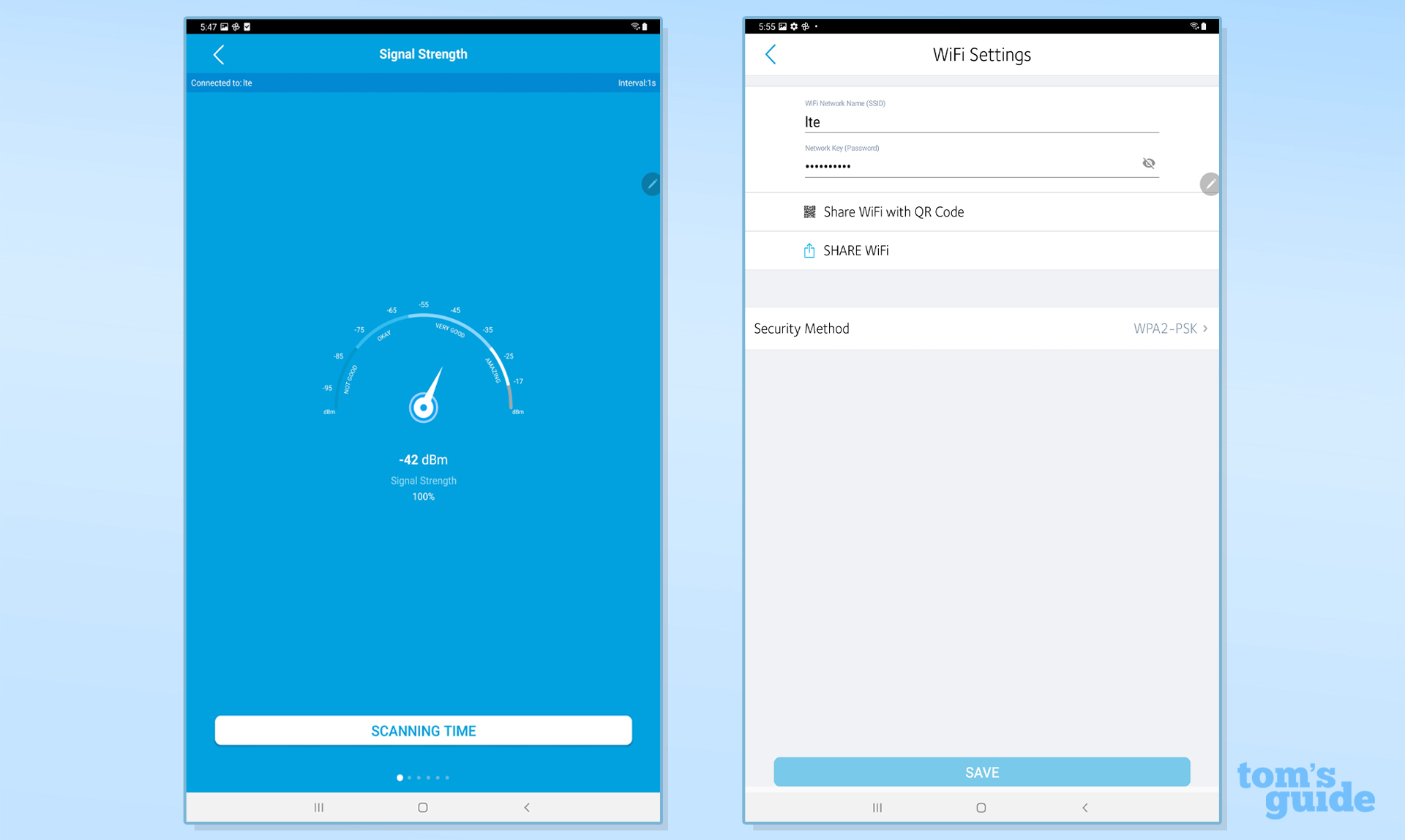
There’s a detailed page that shows the status of the Armor security software with overall security score, the number of threats blocked and current vulnerabilities. The LBR20 also lets you protect the device’s settings with two-factor authentication.
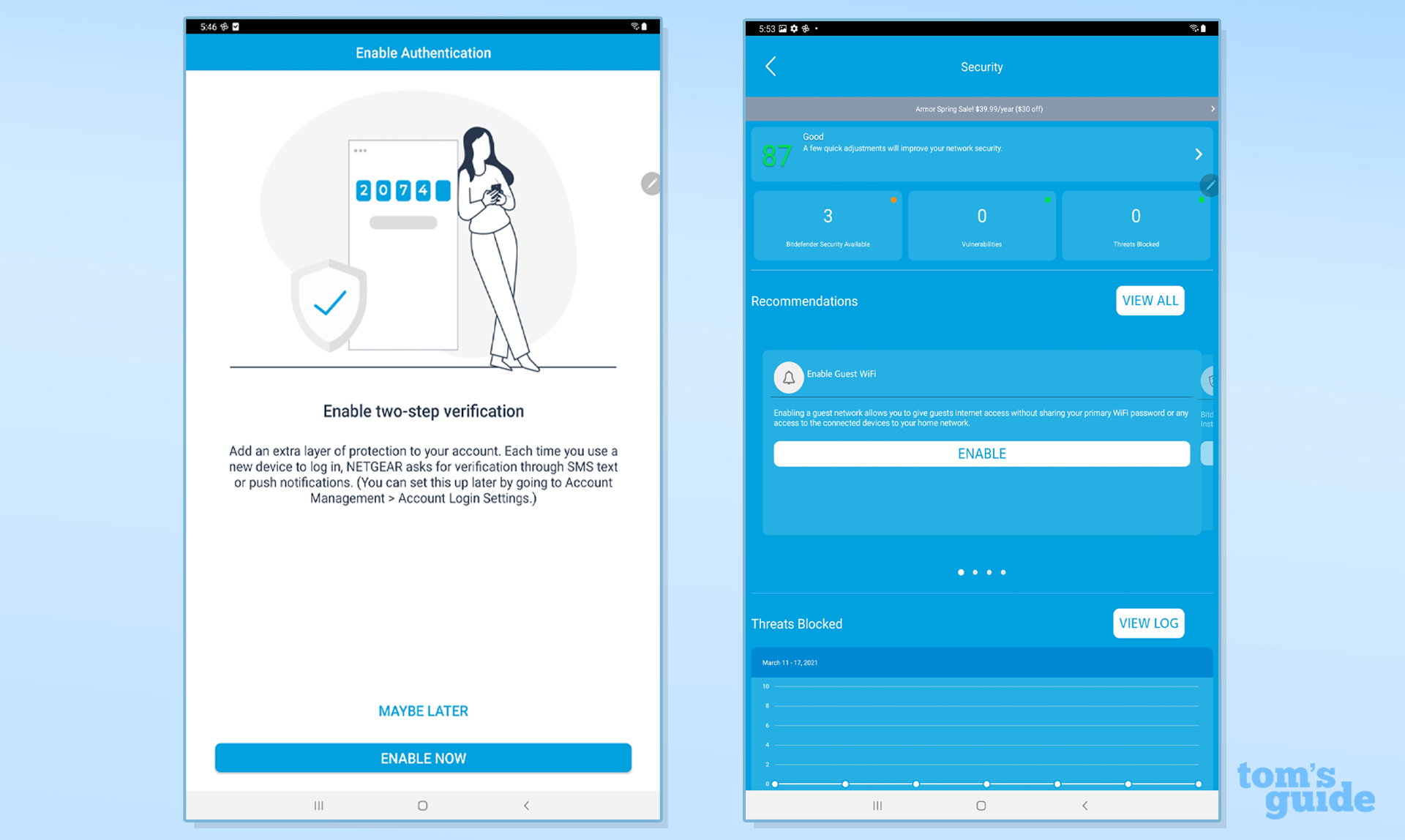
The LBR20 comes with a year of warranty coverage and 90-days of support. That should be plenty to set it up and optimize the device but pales next to Asus’s two-year warranty and support period.
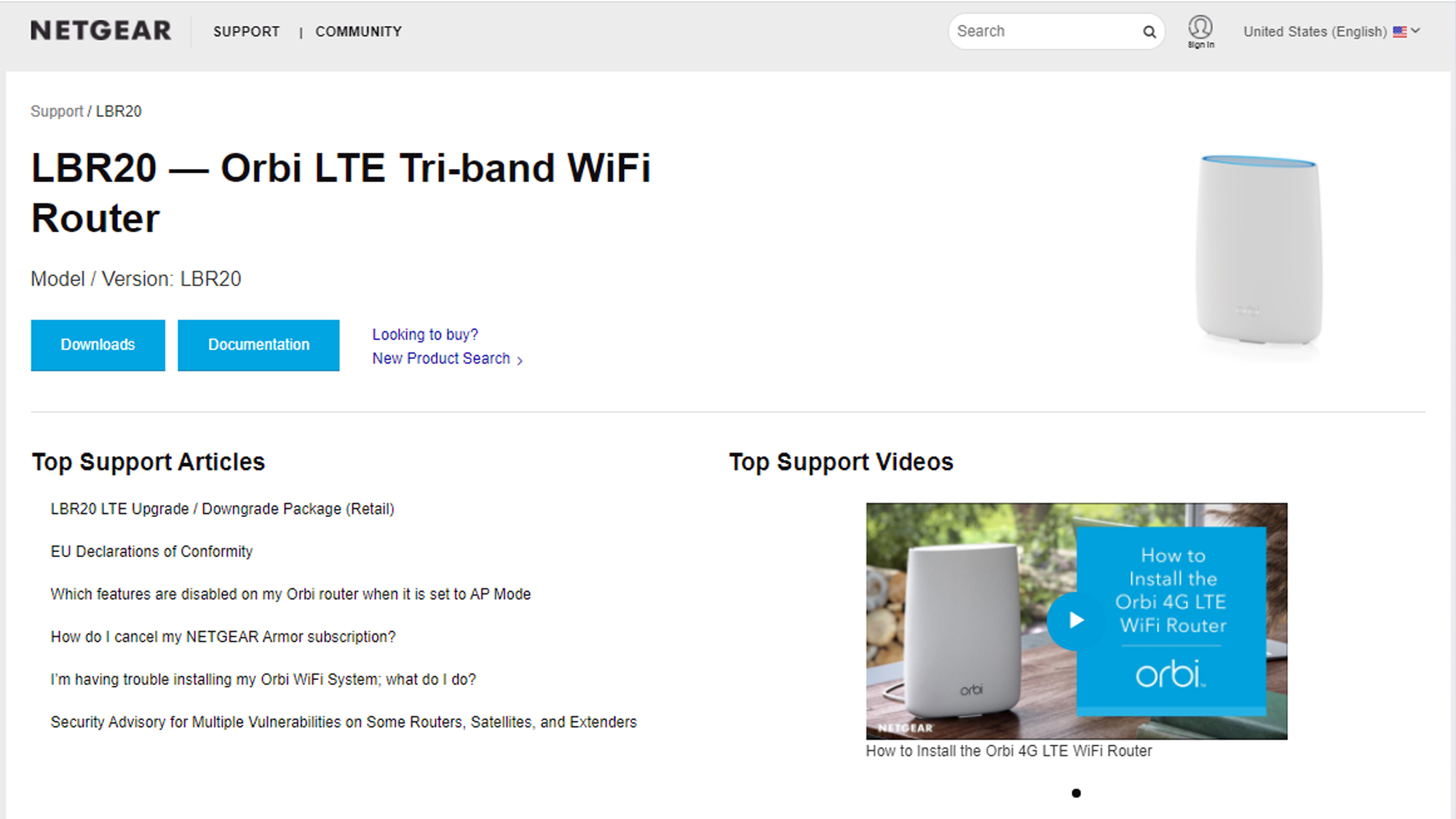
That said, the Netgear support site is full of material to help get the most out of the router. In addition to videos and extensive FAQs, there’s downloadable manuals and firmware updates.
Netgear Orbi 4G LTE Advanced WiFi Router (LBR20) review: Verdict
Netgear’s Orbi 4G LTE WiFi Router (LBR20) does the seemingly impossible by not only using a traditional wired data source but also grabbing data from an LTE network. It works equally well as a primary connection (for an RV or off-the-grid lifestyle) or for backup. It comes with heavy-duty security software, can use an external LTE antenna and bailed me out during an internet outage.
Still, it misses several key points that would have made the LBR20 a killer product. To start, it uses older Wi-Fi 5 and works with LTE technology – not the newer Wi-Fi 6 and 5G. It also lacks complete compatibility with Verizon and Sprint networks.
All told, the LBR20 is unique in the Wi-Fi world, making it a one of a kind router that fills a need for those who don’t want to rely on a wired connection or want a backup.
Brian Nadel is a freelance writer and editor who specializes in technology reporting and reviewing. He works out of the suburban New York City area and has covered topics from nuclear power plants and Wi-Fi routers to cars and tablets. The former editor-in-chief of Mobile Computing and Communications, Nadel is the recipient of the TransPacific Writing Award.


